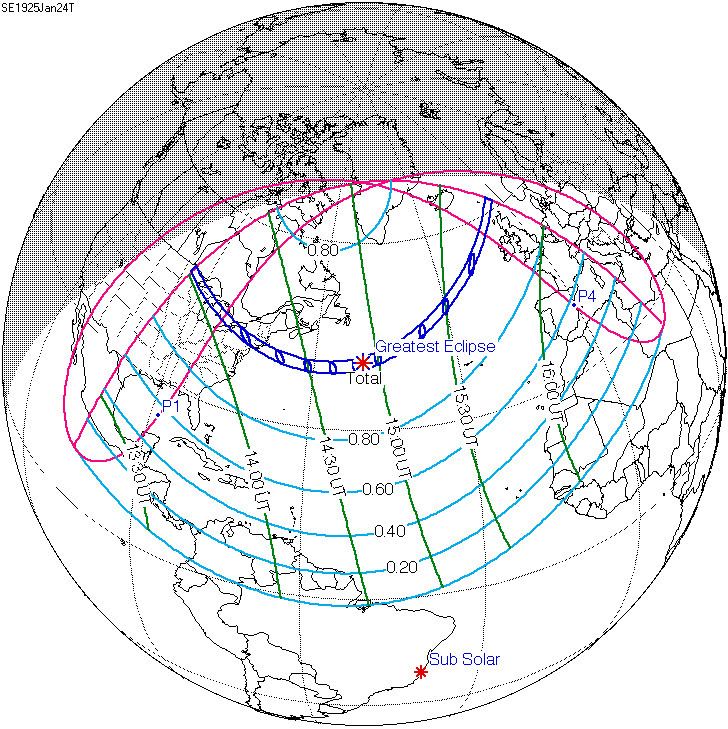Nature Total Magnitude 1.0304 Max. width of band 206 km (128 mi) Start date January 24, 1925 | Gamma 0.8661 Duration 152 sec (2 m 32 s) Greatest eclipse 14:54:03 | |
 | ||
A total solar eclipse occurred on January 24, 1925. A solar eclipse occurs when the Moon passes between Earth and the Sun, thereby totally or partly obscuring the image of the Sun for a viewer on Earth. A total solar eclipse occurs when the Moon's apparent diameter is larger than the Sun's, blocking all direct sunlight, turning day into darkness. Totality occurs in a narrow path across Earth's surface, with the partial solar eclipse visible over a surrounding region thousands of kilometres wide.
Contents
Observations
It was seen in New York City. It was reported that those above 96th Street in Manhattan saw a total solar eclipse while those below 96th Street saw a partial eclipse.
Solar eclipses 1924-1928
Each member in a semester series of solar eclipses repeats approximately every 177 days and 4 hours (a semester) at alternating nodes of the Moon's orbit.
Saros 120
It is a part of Saros cycle 120, repeating every 18 years, 11 days, containing 71 events. The series started with partial solar eclipse on May 27, 933 AD, and reached an annular eclipse on August 11, 1059. It was a hybrid event for 3 dates: May 8, 1510, through May 29, 1546, and total eclipses from June 8, 1564, through March 30, 2033. The series ends at member 71 as a partial eclipse on July 7, 2195. The longest duration of totality was 2 minutes, 50 seconds on March 9, 1997.
